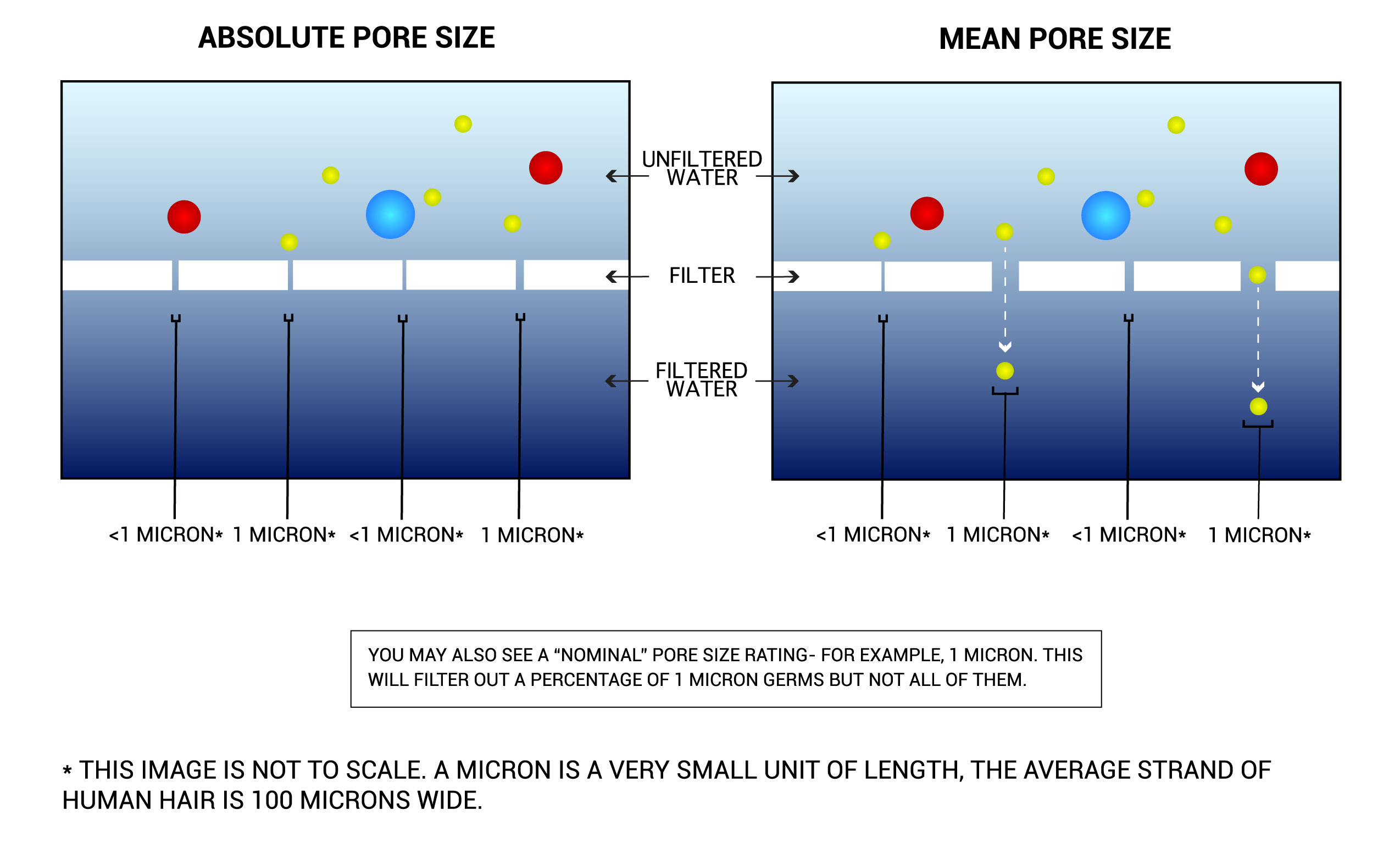Absolute VS Nominal Filters
Basics of waterborne diseases
Bubble point definition
Chemical adsorption of carbon
Granular activated carbon fact sheet
How do carbon filter work?
Water Softener – How do they work? – FAQs
What is a filter Beta Ratio
What is Osmosis and Reverse Osmosis
Water Glossary
What is Ultrafiltration
What is Ultraviolet water treatment?
WHAT’S THE DIFFERENCE?
Filters are rated on their capability to remove particles of a specific size from a fluid, but the problem is that an array of very different methods are applied to specify performance in this way.
Pore size ratings refer to the size of a particular particle or organism retained by the filter media to a specific degree of efficiency. For example, a filter that is marked 10 micron has some ability to capture particle as small as 10 micrometers. However, you do not know precisely what this means unless you also have a description of the test methods and standards used to determine the filter rating. The two most used reported media ratings are nominal and absolute micron rating.
ABSOLUTE RATING
The absolute rating of a filter refers to the diameter of the largest spherical particle, commonly expressed in micrometers (mm), which will pass through the filter under laboratory conditions. It represents the pore opening size of the medium filter. Filter media with a precise and consistent pore size or opening thus, in theory, have an exact absolute rating.
The absolute rating shouldn’t be confused with the biggest particle passed by a filter under operating conditions: the absolute rating clearly determines the size of the largest glass bead which will pass through the filter under very low pressure differentials and nonpulsating conditions.
For the most part this does not usually apply in practice: pore size is modified by the form of the filter element and it is not certainly consistent with the actual open areas. In addition, the actual form of the contaminants are not rounded and the two linear dimension of the particle can be very much smaller than its nominal one, permitting it to pass through a very much smaller hole (i.e. cylindrical particles with a thickness less than the slot opening of the filter).
The passage of oversize particles in this manner relies very largely on the size and shape of the opening and on the depth over which filtering is provided. Most of filters generate a filter bed: contaminants gather on the surface impart a blocking action decreasing the permeability of the element bad developing filter efficiency. When the blocking is so severe that the pressure drop is too much, the flow rate through the system decrease seriously. This explains why the performance of a filter can often exceed its given rating based on the performance of a clean element and why test figures can differ widely with different test conditions on identical elements.
It may be argued that the term absolute rating is not a practical description. Strictly speaking the term absolute indicates that no particle larger than that rating can pass through the filter, limiting the type of media to those of consistent pore size where they show 100% retention of particles.
NOMINAL RATING
The nominal rating refers to a filter that is able of cutting off a nominated minimum percentage by weight of solid particles of a specific contaminant greater than a stated micron size, normally expressed in micrometers (mm). For example, 90% of 10 micron. It also serves as a nominal efficiency figure, or more correctly, a degree of filtration. Process conditions like operating pressure, concentration of contaminant etc., have a compelling effect on the retention of the filters. Many filter manufacturers use comparable tests but, due to the lack of consistency and reproducibility of the basic method, the use of nominal ratings has fallen into disfavor.

